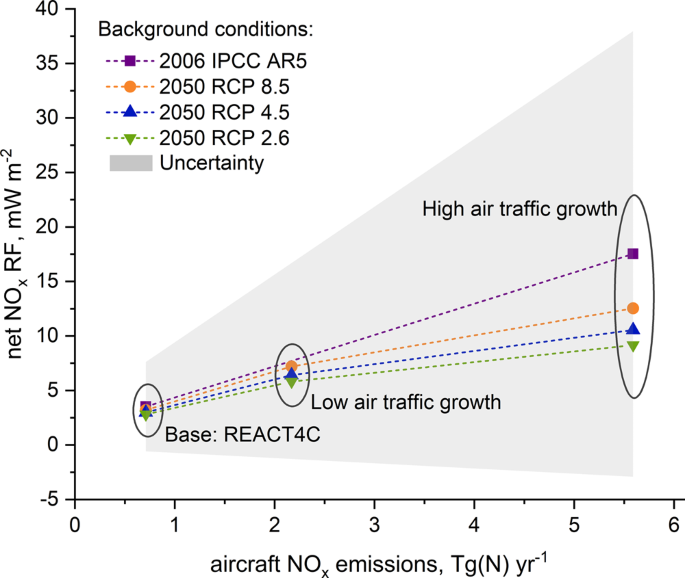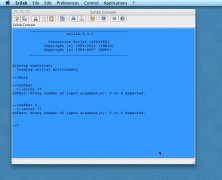Idl 8.5.1 Free
- 8.5.1 Adding Functionality. In terms of source compatibility, adding new functionality to an API is generally a safe thing to do. Adding new classes, new methods, or new free functions does not change the interface for preexisting API elements and so will not break existing code.
- I'm attempting to utilize the new IDL-Python bridge in IDL 8.5.1 on OSX El Capitan 10.11.5. I have used this feature on Windows since it was launched, which works beautifully, but it simply doesn't work on OSX. I have installed Anaconda Python 3.4.1 64bit to test.
- Product Size Download; IDL 8.8 for Windows: 891 MB: Windows (64-bit): IDL 8.8 for Linux: 1.25 GB: 64-bit: IDL 8.8 for MacOS: 920 MB / 918 MB: PKG installer / CLI.tar.
Debug menu (Shell window only)¶ Go to File/Line. Look on the current line. With the cursor, and the line above for a filename and line number. If found, open the file if.
- 2If you have an IDL license
- 2.3IDL libraries
- 3If you don't have an IDL license
- 4Troubleshooting and special considerations
The QA process for SPEDAS 4.1 has now been completed, and this versionof the software is now released for general use for users who have paidfor IDL licenses. This release includes improved support for HTTPS downloads,updated plugin support for the ERG, IUGONET, THEMIS, and MMS missions, andmany bug fixes and performance improvements.
If you have an IDL software license, then you can download and use either the SPEDAS 4.1 release or the untested the nightly build. Check with your system administrator on how to obtain and install IDL.
If you don't have an IDL license, then you have two choices: you can either use the self-contained executables we provide, or you can separately install the IDL Virtual Machine (VM) and use the save file we provide, see below.
Release notes for SPEDAS 4.0 are available here.
Download SPEDAS 4.1 (October 2020)
If you have an IDL license, you can download the SPEDAS 4.1 release, which contains the full source code:
Unzip the file you downloaded in a directory of your choice and create a new IDL project that includes this directory.
You may also need to separately download and install the latest CDF DLM from NASA and the latest Geopack DLM -- see below for details.
To start the SPEDAS GUI from the IDL command line, type: spd_gui
SPEDAS nightly build
Alternatively, you can download the nightly build instead of the SPEDAS 4.1 release. This is build every day and it contains the most recent source code, but it is untested and you may encounter bugs and unresolved problems. It can be installed the same way as the SPEDAS 4.0 release, above.
IDL libraries
IDL Geopack library
To use the Tsyganenko Model extensions with the SPEDAS software, you need to download and install the Geopack DLM. We recommend using the latest version (Geopack 10.6).
Installation instructions can be found in the download page, but basically you have to copy two files into the IDL bin directory, 1) a .dlm file and 2) either a .so file (Linux, Mac) or a .dll file (Windows).
You can check which version of Geopack DLM you have, by typing this at the IDL command prompt: help, 'geopack', /dlm
IDL CDF library
We recommend downloading and installing the most recent version (3.8.0) of the CDF DLM for IDL from NASA:
The suggested installation method is to run the install script for your operating system (e.g., install_idl_win.bat for Windows, install_idl_win.sh for macOS/Linux). Running these scripts will download the latest version of the library and install them to your chosen IDL installation folder.
You can check which version of CDF you have, by typing this at the IDL command prompt: help, 'cdf', /dlm
IDL SPICE library
Some functions (for example, cspice_str2et) require the NASA SPICE library. This library can be downloaded directly from NASA:
The installation is similar to any other dlm library. On windows, you have to copy two files (icy.dlm, icy.dll) into the bin.x86_64 directory of the IDL installation folder.
For more information, see:
IDL DAS2 Library
Das2dlm is an IDL DLM that provides bindings for the das2c library for connecting with DAS2 servers. It is compatible with IDL 8.0 or newer.
The installation is similar to any other dlm library. On Windows, you have to copy two files (das2c.dlm, das2c.x86_64.dll) into the bin.x86_64 directory of the IDL installation folder, and similarly for Linux (das2c.dlm, das2c.linux.x86_64.so) and Mac (das2c.dlm, das2c.darwin.x86_64.so).
For more information, see:
You can check which version of Das2c DLM you have, by typing this at the IDL command prompt: help, 'das2c', /dlm
SPEDAS is free software but if you do not have an IDL license, then you cannot use the IDL command line, and hence neither the SPEDAS command line tools. You can still use the SPEDAS GUI, and you have two options:
- Download the SPEDAS executable (for Linux, MacOS, or Windows), or
- Download the SPEDAS save file (for Solaris or other operating systems).
Download the SPEDAS executables, Version 4.1 (October 2020)
For users without IDL licenses, you can use the SPEDAS 4.1 executable files for Linux, Windows, and MacOS, which allow access to the Graphical User Interface capabilities of SPEDAS, with no additionalIDL license required.
This release contains everything you need, including the IDL VM, the Geopack DLM and the CDF DLM. You just have to unzip the file and run the executable and the SPEDAS GUI will appear.

Download the SPEDAS save file, Version 4.1 (October 2020)
The SPEDAS save file requires the run-time IDL Virtual Machine (VM) which has to be downloaded for free from Harris Corporation. There are limitations using the VM compared to the full IDL.
To run SPEDAS using the IDL virtual machine,
- start the IDL virtual machine executable
- click through the splash screen to get to the file selection dialog
- navigate to the SPEDAS installation
- go into the thm_gui_new directory and click on thm_gui.sav
This should bring up the main screen of the SPEDAS GUI. From this point you should be able to load, plot, and analyze data through the GUI.
Further information for loading IDL save files can be found here:http://harrisgeospatial.com/docs/StartingVirtualMachineApplication.html
Installation on a Mac - XQuartz and Java
Newer Mac OS X versions do not include the X11 libraries. XQuartz (X11) has to be downloaded and installed, or IDL will not work. Also, you may need to install an older Java version for IDL to work properly.

- Download and install XQuartz 2.8.0 or later, from here: http://www.xquartz.org/
- Run the commands in the following page: Known Issues in macOS
- Download and install Java for OS X 2015-001, from here: https://support.apple.com/kb/DL1572
- To be able to install the above software or the executable SPEDAS distribution, you may have to allow installation of applications from unidentified developers.
- Instructions can be found here: https://support.apple.com/kb/PH25088?locale=en_US
- Another way to override these warnings is described here: https://www.mcvsd.org/tips/powerteacher/osx_unidentified_developers.html
MacOS Sierra or later
Newer versions of MacOS have very strict security measures.
If you want to run the executable SPEDAS file on macOS 10.12 Sierra or later, after downloading the zip file you have to do the following:
- Open System Preferences -> Security and Privacy -> General, and select 'Allow apps downloaded from: App Store and identified developers'.
Keep this tab open and click Allow if it asks for permission for any other file while you are doing the following.
- Open the Finder and move the (automatically uncompressed)
spedas_v_4directory from Downloads to your Desktop. - Open a terminal and type the following:
cd Desktop/spedas_v_4_1/spd_gui
sudo xattr -r -d com.apple.quarantine spedas
(enter your password)
sudo open ./spedas
If you receive an error similar to the following:
Error: attempt to add non-widget child “dsm” to parent “idl” which supports only widgets
Then you may be able to resolve it using:
sudo mv /opt/X11/lib/libXt.6.dylib{,.bak}
sudo cp /opt/X11/lib{/flat_namespace,}/libXt.6.dylib
See: https://michaelgalloy.com/2016/11/11/problems-with-xquartz-2-7-11-on-macos.html
Known issues on macOS
For known issues on macOS and solutions, see Known issues - macOS
Installation on Windows
When we update Geopack DLM or the CDF library on Windows, we have to copy files in the 'Program FilesExelisIDL84binbin.x86_64' folder (this folder depends on IDL version, for example it could be C:Program FilesHarrisIDL86binbin.x86_64). When we try to copy files into folders that reside inside Program Files, Windows 10 (and probably older Windows versions, too) will ask for administrator permission as you can see in the following image. In that case, we just have to click the button 'Continue'. If we are logged in as a user without administrator permissions, then we either have to log in as administrator, or perhaps contact the system administrator for the PC we are using.
Known issues on Windows
For known issues on Windows and solutions, see Known issues - MS Windows
Known issues on Linux
New editions of Linux may not be able to run IDL because the library libxp6 is missing. In that case, you have to download the missing library and install it manually:
Idl 8.5
1. Download the 64-bit edition of libxp6 from here:

2. Install the file you downloaded using:
sudo dpkg -i ./libxp6_1.0.1-2ubuntu0.12.04.2_amd64.deb
sudo apt-get install -f
3. If you get an error message involving libinfo.so.5, you may need to manually install it:
sudo apt install libtinfo5

The first time you run SPEDAS, please make sure that all the directories where data files will be downloaded exist and have the proper permissions (they should be writable). To do this, launch the SPEDAS GUI (using the command spd_gui) and in the File menu choose Configuration Settings. Make sure that all the directories for SPEDAS and any other missions you use exist and are writable. If you make any changes, click 'Save to File' to have the new settings saved.
Idl 8.5 Download
For the command line version of IDL, installation consists of setting up the IDL_PATH environment variable.
Simply set the IDL_PATH environment to search all subdirectories of the SPEDAS directory.
for csh or tcsh, place the following in your .cshrc file:setenv IDL_PATH ’<IDL_DEFAULT>:+/path/to/spedas’
for bash or sh, place the following in your .bashrc (Linux, Solaris) or .bash_profile (Mac) file:export IDL_PATH=’<IDL_DEFAULT>:+/path/to/spedas’
It is important to replace the text '/path/to/spedas' with the directory on your system that contains the SPEDAS files. This mightbe something like: '~/spedas_4_1/idl/' Also, don't forget to include the “+” before the directory. Without this, it will not work.
Idl 8.5.1 Free Version
Additional information can be found in THEMIS Use's Guide pdf file.